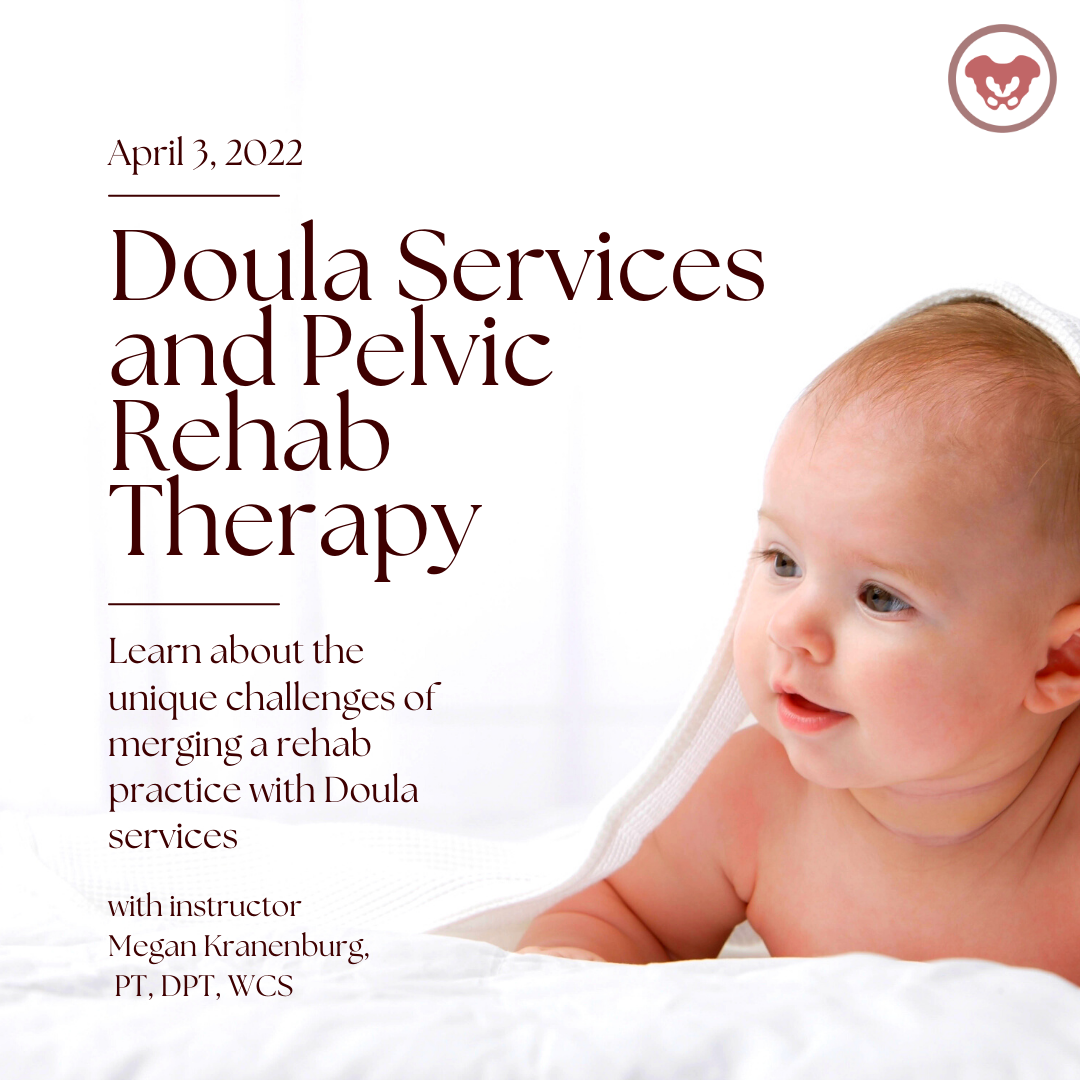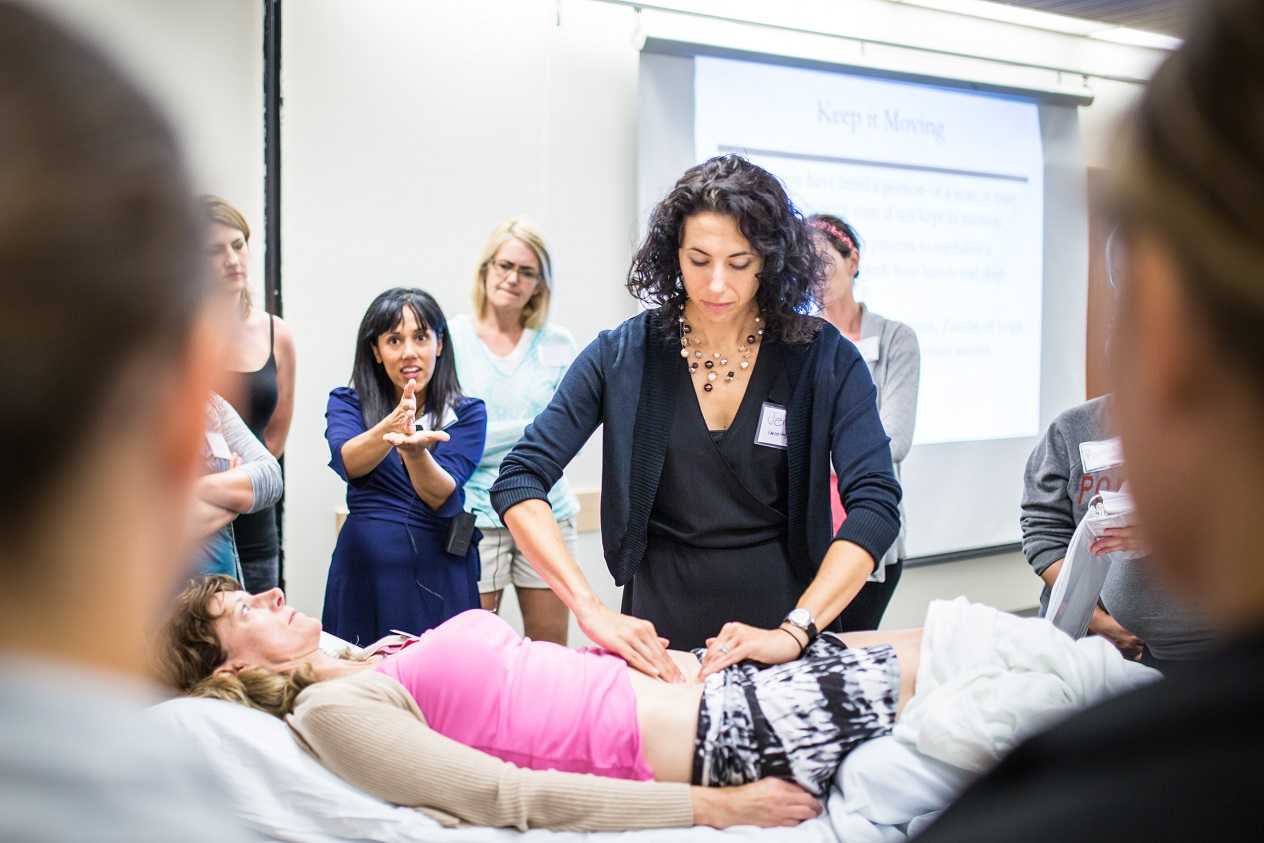What do Doulas and Pelvic Therapists Have in Common?

Megan Kranenburg, PT, DPT, WCS created the course Doula Services and Pelvic Rehab Therapy to present the unique challenges of merging a rehab practice with Doula services. Megan is a physical therapist who has balanced her solo outpatient pelvic health practice and Doula work since 2016. She lives and works in the nexus of Doula training near Seattle, Washington - which has provided plenty of opportunities to observe and participate in birth conversations and process the experience through the Physical Therapist's mind and heart.
As a pelvic floor practitioner, you may know that nearly 24% of women in the United States have pelvic floor dysfunction (as reported by the National Institutes of Health) and that this frequency increases with age. Childbirth can contribute to pelvic floor dysfunction, and it can be beneficial for pelvic therapists to know the doula's toolkit
So what is a doula? Doulas are often the first and sometimes the only people with whom a birthing person will feel comfortable discussing pelvic floor-related issues. Dona International defines a doula as a trained professional who provides continuous physical, emotional, and informational support to a mother before, during, and shortly after childbirth to help her achieve the healthiest, most satisfying experience possible.
Doulas can offer position ideas for comfort and labor progression, while their skilled hands can assist a mispositioned baby find its way through the pelvis. They can also support the birthing parent in learning how to push safely, effectively and protect the pelvic floor for birth. Doulas may hear several different symptoms of pelvic floor conditions from their clients through the perinatal experience. Two examples of natural birth/ pushing that a doula and pelvic therapist can spot or assist with include:
- Long hours of pushing can contribute to long-term muscle weakness and damage as well as lead to incontinence and pelvic organ prolapse.
- Uncoordinated pushing can result in weaker pelvic floor muscles that can last for several months postpartum. This weakness can also contribute to incontinence.
Similarly, Sara Reardon shared in a blog for Doula Trainings International a few symptoms of pelvic floor conditions that doulas may hear from their clients and can be looking out for throughout the birthing experience (1):
- Pain above the vagina that is sharp or achy and is exacerbated when rolling over in bed, or standing on while leg while getting dressed. This can be pubic symphysis dysfunction due to ligament relaxation.
- Pain in the back or lower back on one side that is sharp and is felt with a deep lunge, or when standing for a long time. This can be sacroiliac joint dysfunction due to ligament relaxation.
- Heaviness or pressure in the vagina that is worse at the end of the day, after exercise, or when standing. This can be a prolapse of pelvic laxity/varicose veins/swelling.
- Leakage of urine or poop, constipation, hemorrhoids and straining with bowel movements, incomplete bladder emptying, urinary urgency.
During vaginal birth, the baby passes through the ‘levator hiatus’ in the pelvic floor. This process can damage the fascia, muscles, connective tissues, and nerves. The levator muscles are stretched by 1.5 to more than 3 times their normal length as the baby passes through, depending on the size of both baby and pelvic floor muscle opening. (2) After this fascia is stretched, or torn, it doesn't heal like before. This fascia is attached to the bone and supports the urethra, vagina, and rectum.
Pelvic therapists and doulas can both make a big difference in the health of their clients. The following simple list is a very basic list that can be shared with clients that can make a difference in their healing.
- Breath - Inhale for the count of 2. Exhale for the count of 4. Repeat. Allow the exhale to be longer than your inhale.
- Nutrition - Choose nourishing whole foods. Collagen and mineral-rich foods, good quality protein, zinc, vitamin C are critical for tissue integrity and supporting new connective tissue repair.
- Hydrate - Easy & often. Don't wait until the end of the day to hydrate. Manage fluids throughout the day.
- Movement - Start with a good walk and build up from there. Spend time sitting on the floor with your baby and practice getting up from there.
- Sleep when the baby sleeps. Regular sleep and deep restorative rest are important for healing, recovery, and supporting mental energy.
- Each birth story is important and valid.
Doula Services and Pelvic Rehab Therapy is scheduled for April 3rd, August 6th, and December 10th this year. This is a four-hour, beginner-level course. Practitioner's who register are recommended to have completed Pelvic Floor Level 1, and the following reading:
- Preparing for A Gentle Birth, Calais-Germaine
- Reviving your Sex Life After Childbirth, Wallace
- The Birth Partner, Penny Simkin
- 5 Pelvic Health Lessons For Doulas From The Vagina Whisperer. The DTI Team. Doula Trainings International. Nov 5, 2018. https://doulatrainingsinternational.com/5-pelvic-health-lessons-for-doulas-from-the-vagina-whisperer/
- Pelvic Floor Muscle Damage. Australasian Birth Trauma Association. https://www.birthtrauma.org.au/physical-birth-trauma/pelvic-floor-muscle-damage/#:~:text=The%20levator%20muscles%20are%20stretched,and%20pelvic%20floor%20muscle%20opening.&text=In%20many%20women%2C%20these%20muscles,sometimes%20torn%20off%20the%20bone.
By accepting you will be accessing a service provided by a third-party external to https://hermanwallace.com/











































